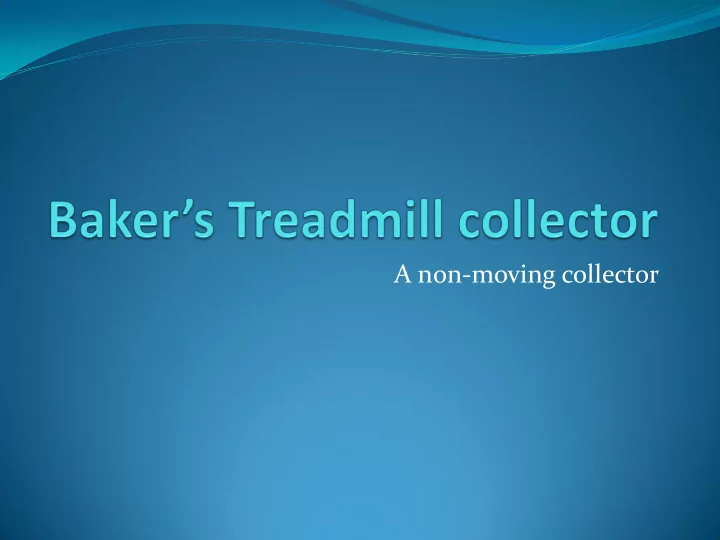

A non-moving collector
Organization of heap memory in GC Heap memory falls in 4 sets in a GC world Scanned objects Visited but unscanned objects Objects not yet visited Free space Semi-space copying collector attempts to implement these spaces Baker’s treadmill collector offers another arrangement of these sets in a non-moving collector 2
Advantages of non-moving collector Better suited for uncooperative environments Mutator does not need to be protected from changes made by collector Collector does not move objects NB: asynchronous movement may be disruptive to compiler optimization 3
Baker’s treadmill Jones and Lin: Diagram 8.15 4
Organization of Baker’s Treadmill All objects organized into cyclic doubly-linked list Hence the name treadmill Each color segment in the list is arranged contiguously Fourth color, off-white used for free list The four segments delimited by four pointers free B T Scan Similar to his incremental copying collector (see next slide) 5
Best known read-barrier collector to_space Tospace new allocations copied objects bottom top scan B T Allocation occurs at top of to_space 6
Operation of Treadmill collector How is allocation done? What about marking? How is it done? No manipulation of color bits is necessary. Why? If scanned pointer refers to a black or grey object no action is required If object is white, what actions must be taken? 7
Effects of snapping Snapping is a constant time operation Offers algorithm potential to meet real-time bounds Only point at which color needs to be discriminated Is object white or not If object is snapped at T end of grey segment Traversal is breadth-first More page faults If object is snapped at scan end of grey segment Traversal is depth-first No auxiliary stack needed 8
More on algorithm GC cycle is complete when no grey cells are left When scan pointer meets T pointer Flip when free pointer meets B pointer Only two colors at this point: black and white Black segment white White segment off-white B and T pointers are exchanged Treadmill advances its segments 9
Cost of treadmill algorithm Expensive with regards to space compared with non- moving collectors Space overhead for Links Memory utilization no more than copying collector Allocation more expensive than bumping a pointer Has problems with handling variable size objects Uses read-barrier to synchronize collector with mutator Read-barriers are expensive 10
Hardware support for real-time GC No software GC has yet to demonstrate convincing hard real-time performance Read-barrier techniques expensive Write-barrier techniques vary in the face of virtual memory Nilsen and Schmidt argue that hard real-time systems must have hardware support 11
Nilsen’s hardware architecture Jones and Lin: Diagram 8.15 12
Motivation for Nilsen’s architecture General purpose computers, besides supercomputers , that rely on specialized hardware have not had commercial success Nilsen isolates GC hardware in a special memory module that interfaces with the CPU through memory bus Rational: technology investment will be shared between different processor architecture 13
Recommend
More recommend